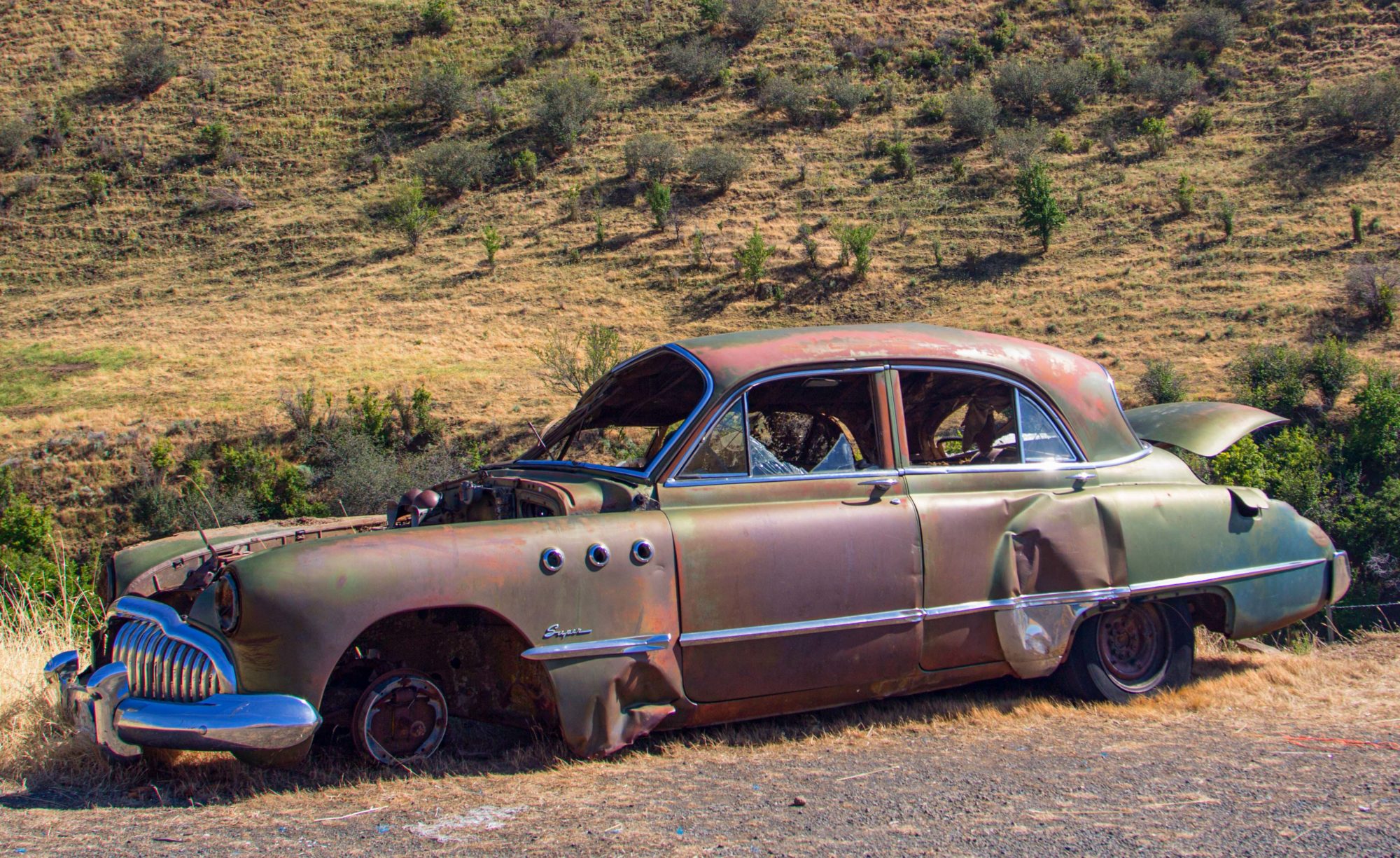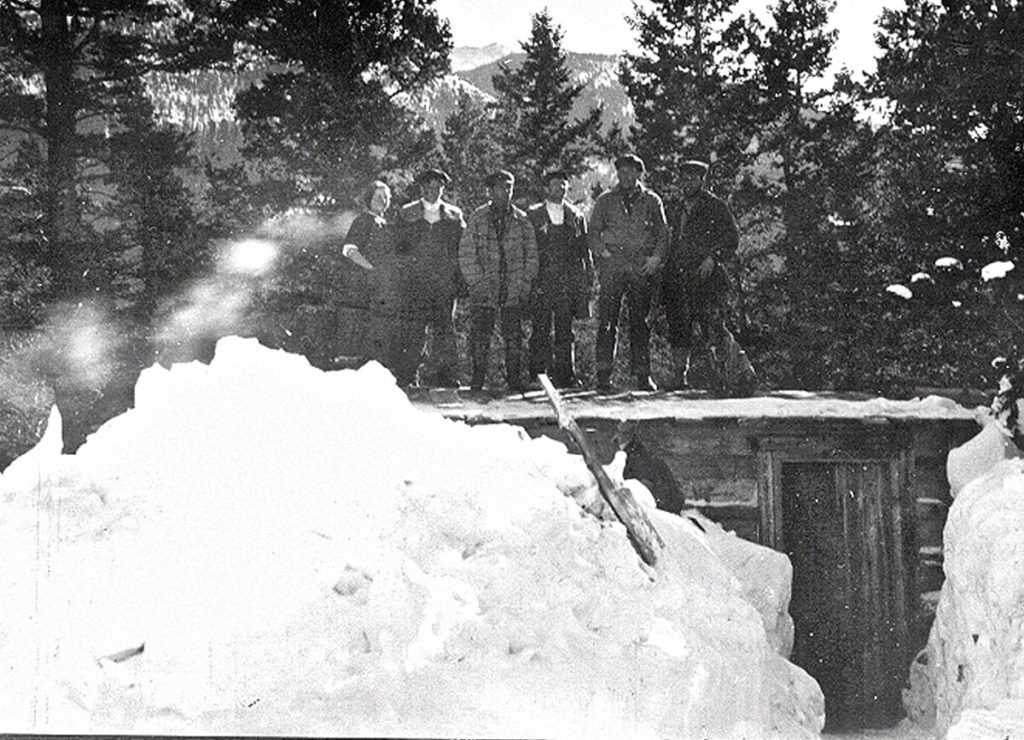Memories shared by Guest Author, my daddy, as told to him by those who experienced these events.
The promise of wedding bells was in the air. Their first sawmill duties included sawing lumber for the needed housing. The very first house they built was a frame building set up near a year-round spring[1] about three quarters of a mile further down the valley. The frame house huddled beside half a dozen trees across from the split top cliff-rock that borders the little spring creek.
This is the house that is pictured wrapped in snow with a digging crew on its roof. The next day (?) Ernest floundered his way through snow to get a midwife at the Brannin Ranch. My brother, John Carrington Ward, was home delivered here by his sweating, praying father. This was March, 1917.
On April 6th of that year the United States declared war on Germany. Both Ernest Parker and Bud Ward enlisted in the army and were sent overseas with the Army Engineers. Their experience with the sawmill proved beneficial. In France Ernest Parker would work a timbering crew, and Robert Ward would be Master Mechanic and sawyer of railroad ties and road and bridge timbers. Mother and her baby moved back to the Brannin ranch for the duration of the war.
When the next winter came it didn’t snow. The summer that followed had little rain, and a brush fire broke out near the falls of the Sweet Grass. The south side of the valley burst into flame. Two kids, Lloyd Rein and Benny Green, were riding in the Olson meadow. They saw the smoke and galloped up to tell Gordon (Langston) and Bill Briner who were working on the line fence between the Olson field and Brannin’s. Gordon left to collect some firefighting tools. Benny, Loyd, and Briner headed toward Brannin’s. They got there just as Babe Ward jerked the saddle off Dick Brannin’s horse, threw the saddle in the wagon for the Rein crew to deliver, jumped on the horse bareback and streaked over the hills toward Tronrud’s and the nearest phone to report the fire.
Within a few hours the mountains on the south side of the river were burned off from near the falls of the Sweet Grass to the Brannin Beaver ponds. When Ward and Parker came back from the war the mountains were still smoking. The scars of the fire dominated the valley for thirty years. Half of the available timber had burned. Some of the ‘wobbly” fire fighters, imported from the IWW Mine Union at Butte, nursed new blazes to augment their income. Bud Ward’s first civilian job was to dress in his army uniform, carry a rifle and ride shotgun for the lead Forest Ranger when he told the Wobblies they were fired. They looked at the glint in Bud’s eyes and decided to go back to Butte.
Blackened tree skeletons covered the south side of Sweet Grass Canyon. The Forest Service offered a permit to salvage the burned timber. The sawmill was set up on the shady side of the creek and a temporary cabin built on government land in a clearing at the foot of a burnt mountain. This was a place to live, but it wasn’t a house of Mother’s dreams. The next one would be. Soon the Ward and Parker sawmill would be back in business.
Question: how can you run a sawmill when the trees have all been killed by fire?
Answer: You salvaged the trees, turned black, you spit black and made blackened laundry for the laundress.
The mountain land not already settled was divided between the Northern Pacific Railroad and the National Forest. This meant setting up a sawmill on government land on the south side of the mountain about half a mile southwest of the Brannin holdings. They built house #2 near a spring that gushed clean water out from the blackened hillside. This was a log house, the sawmill was set up nearby, and some rabbit pens and chicken coups were built. The mink and weasels killed the rabbits. Hawks raided the chickens, and Mother and the Grey Hound-Great Dane dog battled the hawks. Brannin’s pet bear broke into this house and stole a fifty-pound sack of sugar. The sack tore open and left a trail of sugar across the floor. Later Uncle Gus killed the bear.
[1] The largest spring burst out of the ground at the foot of a meadow. When the sawmill was moved to its more permanent location on the hill above where Gommie’s house would be, a quarter of a mile-long flume was built to carry water from the spring to the sawmill where it would flush out the sawdust from the sawing operation. A smaller spring, coming out of the steep hillside was later boxed in and a pipe laid to carry water to the house (in the 1940s.).

